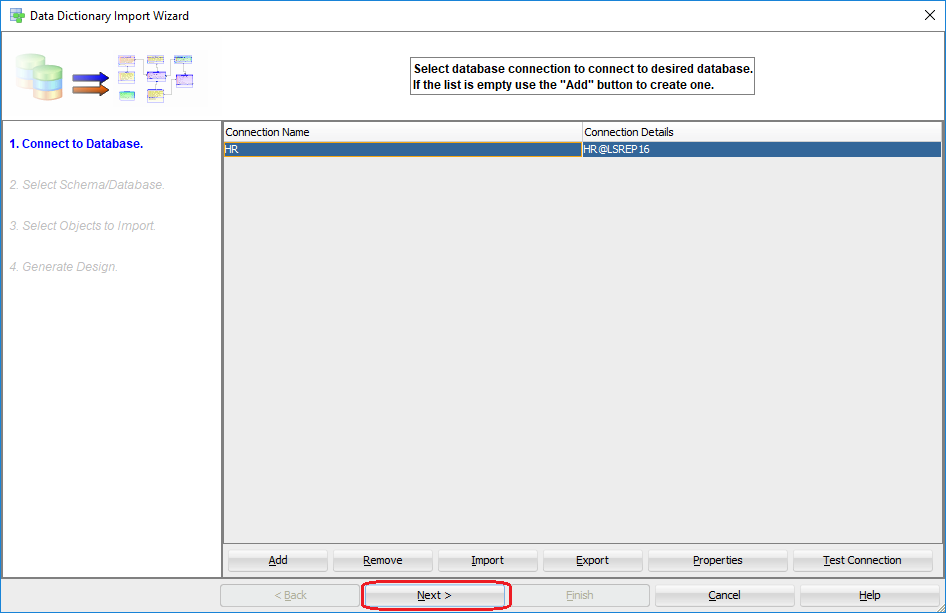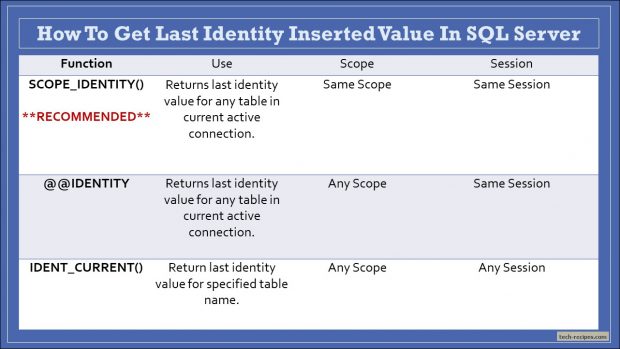What Oracle Object Is Used To Manage Auto-generated Primary Key
A primary key constraint define a column or series of columns that uniquely identify a given row in a table. Defining a primary key on a table is optional and you can only define a single primary key on a table. A primary key constraint can consist of one or many columns (up to 32). I am assuming that the existing PL/SQL object referencing the table would become invalid during the online redefinition, correct? If this is the case, I would also assume that the new PL/SQL object reflecting the new column being added would need to be loaded after the redefinition, or can it be included as part of the redefintion?
- What Oracle Object Is Used To Manage Auto-generated Primary Key Data
- What Oracle Object Is Used To Manage Auto-generated Primary Keyboard
- What Oracle Object Is Used To Manage Auto-generated Primary Key Mean
- What Oracle Object Is Used To Manage Auto-generated Primary Key 2017
- What Oracle Object Is Used To Manage Auto-generated Primary Keys
- What Oracle Object Is Used To Manage Auto-generated Primary Key Access
Oct 16, 2015 Primary key in Oracle. A primary key is a single column or set of columns that uniquely identifies a record. A table may or may not have primary key. Whenever any column is defined as primary key it CANNOT contain null values. Sorry about that - I should have used 9i as well. 10g is doing a better job of smearing the predicate over into V2. 10g is being pretty smart - recognizing that it can spread the predicate against id2 and id3 from V1 into V2 - even though the view V does not have those columns at all. How do you define a composite primary key consisting of the attributes NAME and DOB? (NAME, DOB) PRIMARY KEY. What Oracle object is used to manage auto-generated primary key? Select one: a. CONSTRAINT c. AUTO INCREMENT. What happens when you issue the DELETE FROM tablename command without specifying a where. The Identity column is new to Oracle 12c, and this article explains what it is for and how to use it. Have you ever needed to generate a unique value for a. How to Use the Identity Columns in Oracle for Auto Generated Primary Keys - Spiceworks. A FOREIGN KEY column makes a relationship with a specified PRIMARY or UNIQUE KEY. If a FOREIGN KEY is applied on multiple columns, called a composite FOREIGN KEY. A Table or VIEW which contains the FOREIGN Key is known as child object and if FOREIGN Key column(s) references the TABLE or VIEW is known as PARENT object.
AUTO INCREMENT Field
Auto-increment allows a unique number to be generated automatically when a new record is inserted into a table.
Often this is the primary key field that we would like to be created automatically every time a new record is inserted.
Syntax for MySQL
The following SQL statement defines the 'Personid' column to be an auto-increment primary key field in the 'Persons' table:
Personid int NOT NULL AUTO_INCREMENT,
LastName varchar(255) NOT NULL,
FirstName varchar(255),
Age int,
PRIMARY KEY (Personid)
);
MySQL uses the AUTO_INCREMENT keyword to perform an auto-increment feature.
By default, the starting value for AUTO_INCREMENT is 1, and it will increment by 1 for each new record.
To let the AUTO_INCREMENT sequence start with another value, use the following SQL statement:
To insert a new record into the 'Persons' table, we will NOT have to specify a value for the 'Personid' column (a unique value will be added automatically): Dell bios key generator software.
VALUES ('Lars','Monsen');
The SQL statement above would insert a new record into the 'Persons' table. The 'Personid' column would be assigned a unique value. The 'FirstName' column would be set to 'Lars' and the 'LastName' column would be set to 'Monsen'.
Syntax for SQL Server
The following SQL statement defines the 'Personid' column to be an auto-increment primary key field in the 'Persons' table: Office 2007 key code generator.
Personid int IDENTITY(1,1) PRIMARY KEY,
LastName varchar(255) NOT NULL,
FirstName varchar(255),
Age int
);
The MS SQL Server uses the IDENTITY keyword to perform an auto-increment feature.
In the example above, the starting value for IDENTITY is 1, and it will increment by 1 for each new record.
Tip: To specify that the 'Personid' column should start at value 10 and increment by 5, change it to IDENTITY(10,5).
To insert a new record into the 'Persons' table, we will NOT have to specify a value for the 'Personid' column (a unique value will be added automatically):

VALUES ('Lars','Monsen');
The SQL statement above would insert a new record into the 'Persons' table. The 'Personid' column would be assigned a unique value. The 'FirstName' column would be set to 'Lars' and the 'LastName' column would be set to 'Monsen'.
Syntax for Access
What Oracle Object Is Used To Manage Auto-generated Primary Key Data
The following SQL statement defines the 'Personid' column to be an auto-increment primary key field in the 'Persons' table:
Personid AUTOINCREMENT PRIMARY KEY,
LastName varchar(255) NOT NULL,
FirstName varchar(255),
Age int
);
What Oracle Object Is Used To Manage Auto-generated Primary Keyboard
The MS Access uses the AUTOINCREMENT keyword to perform an auto-increment feature.
By default, the starting value for AUTOINCREMENT is 1, and it will increment by 1 for each new record.
Tip: To specify that the 'Personid' column should start at value 10 and increment by 5, change the autoincrement to AUTOINCREMENT(10,5).
To insert a new record into the 'Persons' table, we will NOT have to specify a value for the 'Personid' column (a unique value will be added automatically):
VALUES ('Lars','Monsen');
The SQL statement above would insert a new record into the 'Persons' table. The 'Personid' column would be assigned a unique value. The 'FirstName' column would be set to 'Lars' and the 'LastName' column would be set to 'Monsen'.
Syntax for Oracle
In Oracle the code is a little bit more tricky.
What Oracle Object Is Used To Manage Auto-generated Primary Key Mean
You will have to create an auto-increment field with the sequence object (this object generates a number sequence).
Use the following CREATE SEQUENCE syntax:
MINVALUE 1
START WITH 1
INCREMENT BY 1
CACHE 10;
The code above creates a sequence object called seq_person, that starts with 1 and will increment by 1. It will also cache up to 10 values for performance. The cache option specifies how many sequence values will be stored in memory for faster access.
To insert a new record into the 'Persons' table, we will have to use the nextval function (this function retrieves the next value from seq_person sequence):
VALUES (seq_person.nextval,'Lars','Monsen');
What Oracle Object Is Used To Manage Auto-generated Primary Key 2017

What Oracle Object Is Used To Manage Auto-generated Primary Keys
The SQL statement above would insert a new record into the 'Persons' table. The 'Personid' column would be assigned the next number from the seq_person sequence. The 'FirstName' column would be set to 'Lars' and the 'LastName' column would be set to 'Monsen'.